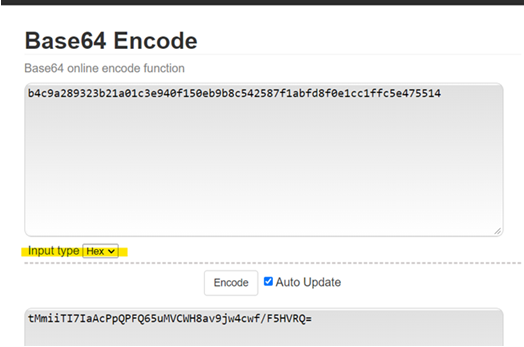
Base64 encoder
Created on 6 October, 2024 • Converter Tools • 78 views • 4 minutes read
Base64 Encoder: Everything You Need to Know
A Base64 encoder is a tool that converts binary data into text format using the Base64 encoding scheme. This encoding system is commonly used for transmitting data over media that are designed to handle text, ensuring that the data remains intact without modification during transport.
What is Base64 Encoding?
Base64 encoding is a method of converting binary data into ASCII text. It takes the binary data and translates it into a base-64 representation using 64 different ASCII characters, which include uppercase letters, lowercase letters, numbers, and a few special symbols. This method ensures that the encoded data can be easily transferred over text-based protocols such as email or HTTP.
Why Use Base64 Encoding?
Base64 encoding is used to ensure that binary data, such as images or files, can be safely sent over communication channels that expect text, without corruption or misinterpretation. It’s commonly used in email attachments, embedding data in web pages, and transferring data over APIs.
How Does a Base64 Encoder Work?
A Base64 encoder takes binary or plain text input and converts it into Base64 format. Here's how the encoding process works:
- Input Data: The binary or plain text is divided into 3-byte chunks (24 bits).
- Conversion: Each 3-byte chunk is converted into four 6-bit Base64 digits.
- Mapping: The Base64 digits are mapped to the corresponding Base64 characters using a standard lookup table.
Example of Base64 Encoding
Let's say you want to encode the word "Hello":
- Binary Conversion: The text is first converted to binary format.
- Split into Chunks: These binary values are split into groups of six bits.
- Base64 Digits: Each group of six bits is then translated into its corresponding Base64 character.
So, the encoded form of "Hello" becomes SGVsbG8= in Base64 format.
Benefits of Using a Base64 Encoder
1. Safe Transmission of Binary Data
A Base64 encoder ensures that binary data, like images or files, can be safely transmitted over media that are designed to handle text. This prevents the data from being corrupted during transmission.
2. Universal Compatibility
Base64 encoded data is compatible with most platforms and programming languages. It is widely used in email encoding, web data embedding, and other applications where text-only formats are required.
3. Simple and Efficient
Base64 encoding is a relatively simple and efficient process, allowing for quick conversion of binary data into a readable text format.
Common Applications of Base64 Encoding
Base64 encoding is used across various industries and applications. Below are some of its most common uses:
1. Email Attachments
Many email systems are designed to handle text, so binary attachments (like images or documents) need to be encoded in Base64 format before they can be sent. The receiver can then decode the Base64 string back into the original file.
2. Embedding Images in HTML/CSS
Base64 is used to embed images directly into HTML or CSS files. This reduces the need for external image file requests, improving page load speeds.
3. Data Storage and APIs
APIs often use Base64 encoding to transfer binary data in JSON format. Storing and transmitting binary data as Base64 text ensures that data remains intact across different platforms.
How to Use a Base64 Encoder
Using a Base64 encoder is straightforward. You can either manually encode data by using online tools or write a simple program in languages like Python, JavaScript, or PHP to encode your data. Here’s how you can use an online Base64 encoder:
Step-by-Step Guide:
- Input Data: Paste your text or upload a file that you want to encode into the Base64 encoder.
- Click Encode: Click the “Encode” button to convert the data to Base64.
- Copy the Output: Once encoded, the Base64 string will be displayed, which you can copy and use as needed.
Base64 Encoding in Programming Languages
- Python: Use Python’s built-in base64 library to encode data:pythonCopy codeimport base64 encoded_data = base64.b64encode(b'Hello') print(encoded_data) # Outputs: b'SGVsbG8='
- JavaScript: Use the btoa() function for encoding strings:javascriptCopy codelet encodedData = btoa('Hello'); console.log(encodedData); // Outputs: SGVsbG8=
Top Online Base64 Encoders
Here are some of the best online Base64 encoders available:
1. Base64 Encode by Base64.guru
This tool offers quick and reliable Base64 encoding for both text and file input. It supports a variety of formats, including images and PDFs.
2. Base64 Encoder by Convertio
Convertio’s Base64 encoder allows you to upload files and convert them to Base64 format with ease. It also supports drag-and-drop functionality.
3. Base64 Encoding Tool by Browserling
Browserling provides a simple and effective Base64 encoder. You can input your text or file, and it will generate the encoded output instantly.
Conclusion
A Base64 encoder is an essential tool for converting binary data into a text-friendly format. Whether you’re sending email attachments, embedding images in web pages, or transferring data through APIs, Base64 encoding ensures safe and efficient transmission. With its simplicity and broad application, it remains a popular choice for handling text and binary data across multiple platforms.
Popular posts
-
Ascii converterConverter Tools • 116 views
-
Hex converterConverter Tools • 106 views
-
Binary converterConverter Tools • 95 views
-
Case converterText Tools • 92 views
-
DNS LookupChecker Tools • 91 views